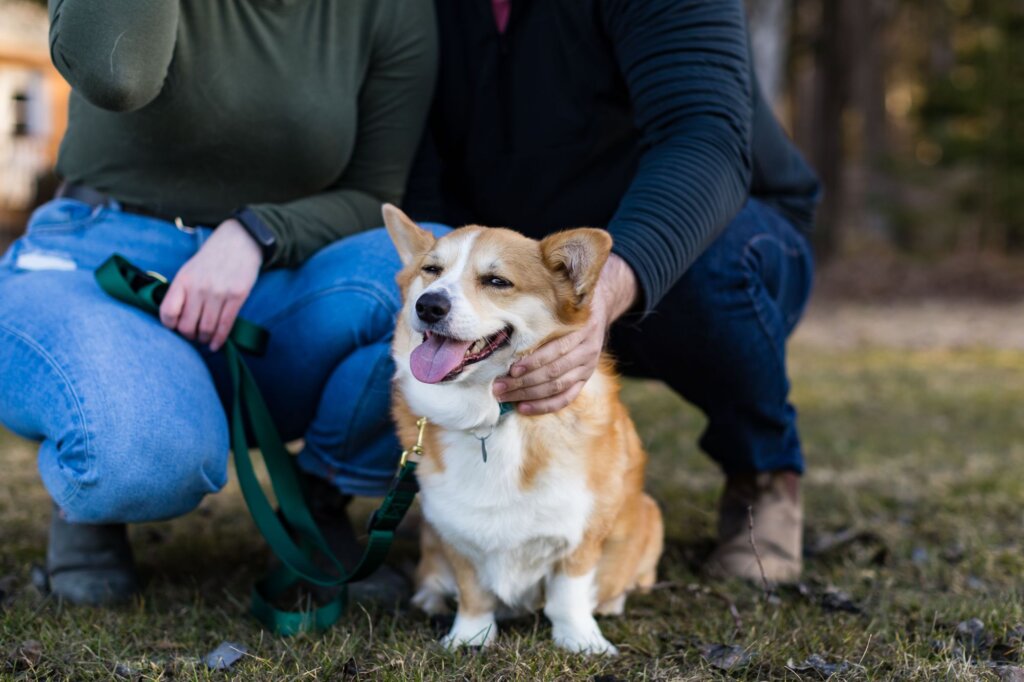Just like humans, pets can experience weight-related health issues like joint pain and heart disease. But do you know how to tell if your pet is overweight? And, if they are, what can you do about it? Let’s go over a few ways to recognize the signs, as well as steps you can take to help them maintain a healthy weight.
1. How to Tell If Your Pet Is Overweight
It’s not always easy to tell if your pet is carrying a little extra weight, especially if they have thick fur or a stockier build. There are a few different ways to check, including:
- Looking at Their Body Shape – At a healthy weight, a dog or cat should have a noticeable waist when viewed from above. If their body looks more rounded with no visible waistline, they may be overweight.
- Feeling for Their Ribs – You should be able to feel your pet’s ribs easily. If you have to press hard to find them, your pet might be overweight.
- Checking Their Energy Levels – If your pet seems less active, tires easily during walks, or struggles to jump onto furniture like they used to, their weight could be a factor.
If you’re unsure, a quick trip to the vet can help determine if your pet is at a healthy weight and what steps to take next.

2. Common Causes of Pet Weight Gain
Weight gain in pets typically happens gradually, and it’s usually due to one or more of the following factors:
- Overfeeding – Many pet owners unknowingly feed their pets more than they need. Free-feeding (leaving food out all day) or regularly offering table scraps can quickly lead to extra pounds.
- Lack of Exercise – Just like people, pets need regular physical activity. Indoor cats and older dogs are especially prone to weight gain if they don’t get enough movement.
- High-Calorie Treats – Treats are great for training and bonding, but too many high-calorie treats can add up fast. Some dog biscuits contain as many calories as a small meal!
- Age and Metabolism – As pets age, their metabolism slows down, making it easier for them to gain weight.
- Medical Conditions – Certain health issues can contribute to weight gain. If your pet is gaining weight rapidly without diet changes, consult your veterinarian.
3. How to Help Your Pet Lose Weight Safely
If your veterinarian recommends for your pet to shed a few pounds, small changes can make a big difference.
- Measure Their Food and Feed at Mealtimes – Instead of guessing or free-feeding, use a measuring cup to make sure you’re feeding your pet the correct portion size per day. Check the recommended serving size on the pet food label or ask your vet for guidance.
- Choose a Healthy Diet – Opt for high-quality pet food with lean protein, lower fat content, and fewer fillers. Some pet foods are specifically designed for weight management.
- Limit Treats – Swap out high-calorie treats for healthier alternatives like baby carrots, green beans, or small portions of lean protein. Be sure to check nutrition labels and watch how many you give them, as treats should not exceed 10% of your pet’s daily calories.
- Increase Physical Activity – Engage your pet in daily exercise that fits their needs:
- For dogs: More frequent and/or longer walks, interactive play, or agility activities.
- For cats: Laser pointers, feather toys, or treat-dispensing puzzle toys to keep them engaged.
- Monitor Their Progress – Weigh your pet regularly to see if they’re making progress. Even a little bit of weight loss can improve their health and mobility.
If you’re making changes to your pet’s diet or activity levels, it’s best to consult your vet first to make sure the approach is safe and effective.
4. The Benefits of Maintaining a Healthy Weight
Helping your pet reach and maintain a healthy weight isn’t about looks. Health benefits include reduced risk of joint pain and arthritis, lower chances of developing diabetes or heart disease, more energy and better mobility, a longer lifespan, and improved quality of life.
If you’ve noticed your pet is gaining a little extra weight, there are steps you can take. By feeding appropriate portions, choosing nutritious foods, cutting back on the treats, and increasing daily exercise, you can support their overall health and happiness for many years.
This article is for informational purposes only and does not constitute professional veterinary advice.